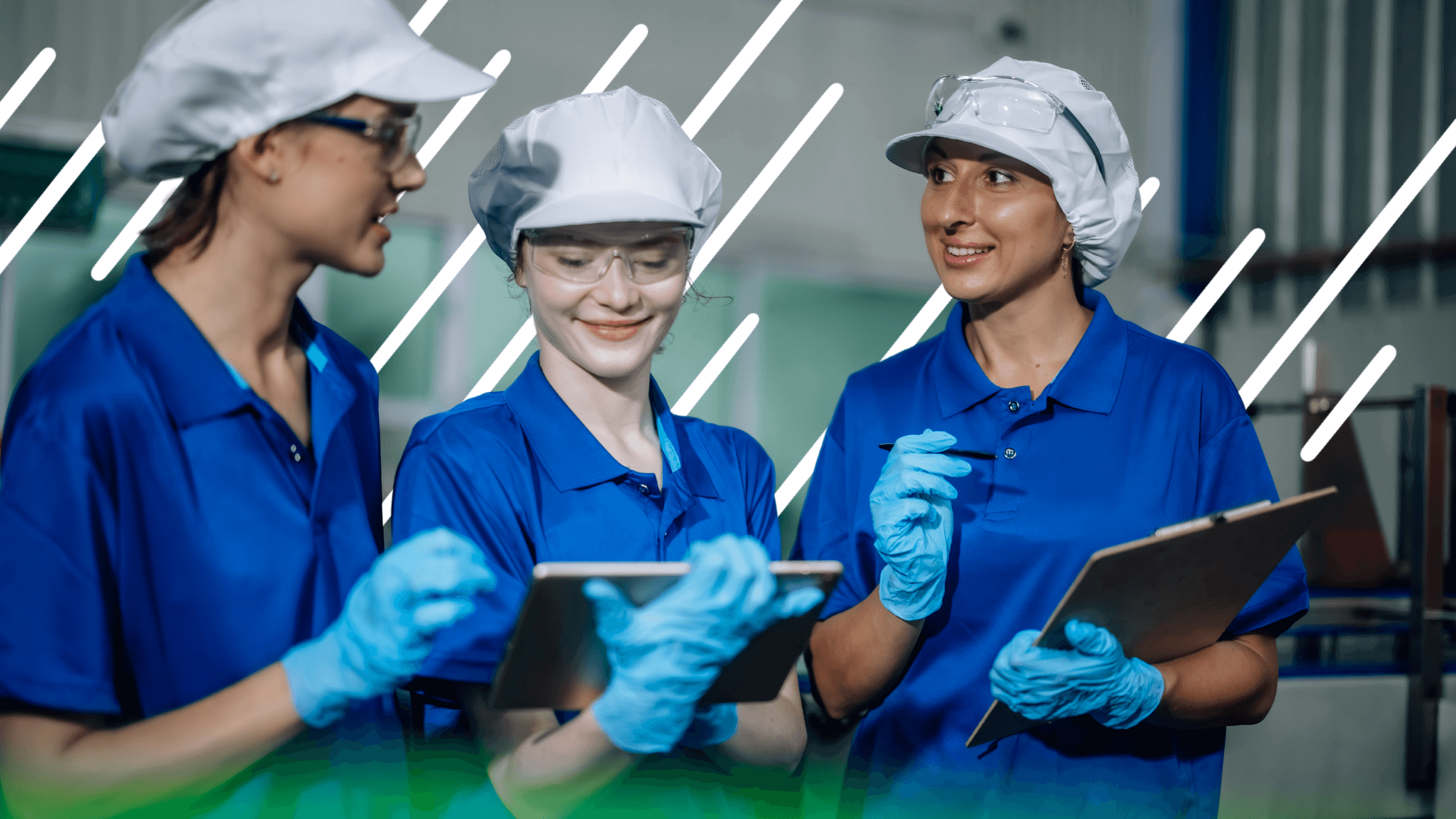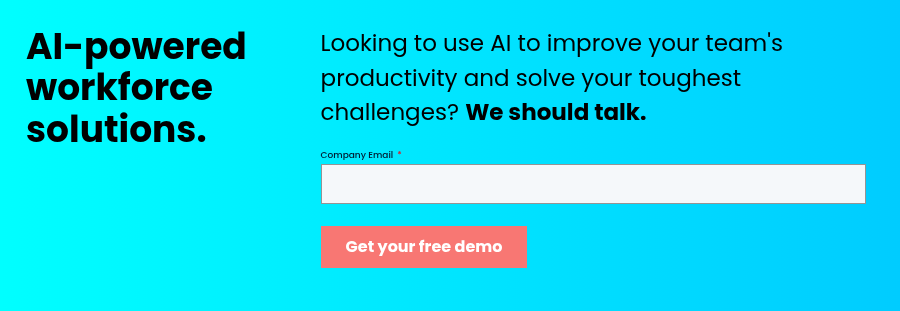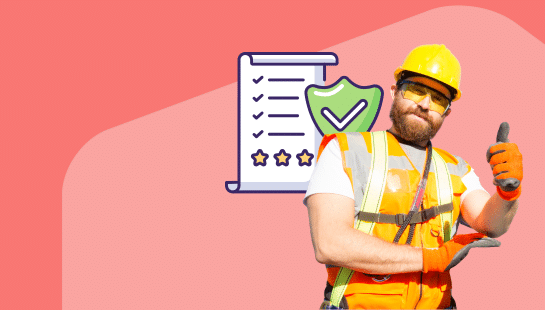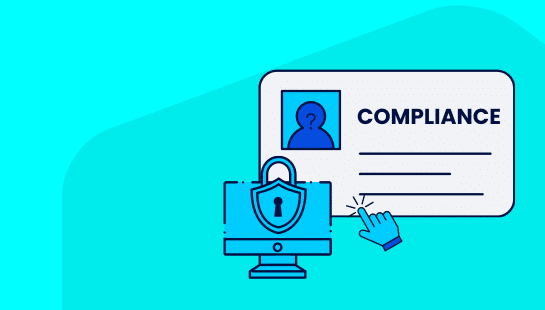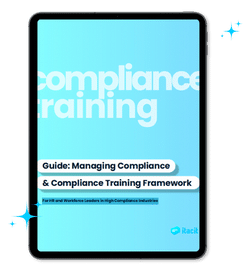AI continues to reshape the scene of workforce operations, and 72% of companies already use some form of artificial intelligence in their HR departments. Your organization might be falling behind if you still handle HR tasks manually. HR leaders know this too – 76% believe their organizations must adopt AI solutions within two years to stay competitive.
The data tells a compelling story. Organizations that use artificial intelligence in human resources see remarkable results. AI saves time and optimizes efficiency for 85% of companies. AI chatbots cut recruitment time in half. Companies could reduce HR costs by up to 40% when they implement smart automation. AI tools predict when employees might leave, cut turnover by up to 43%, and make teams 18% more productive.
This piece walks you through practical ways HR professionals can use AI. You’ll learn about its applications in recruitment, onboarding, engagement, and performance management. We’ll get into how AI helps HR teams move from administrative work to strategic initiatives. You’ll also find out about ethical considerations and concrete steps to implement AI in your department effectively.
The evolution of AI in human resources
AI’s rise in human resources has been gradual. Simple digital tools have transformed into sophisticated systems that fundamentally change how HR departments operate.
From applicant tracking systems to generative AI
The early 2000s brought the first major step in HR’s digital progress with talent management systems. These platforms helped organizations track employee performance and development better. HR teams could now use data analysis tools to make more informed decisions.
Big data capabilities gave HR teams more analytical power. They could learn about employee performance, satisfaction, and participation in depth. This progress led to predictive analytics that helped HR teams spot workplace issues early.
“Twenty years ago, HR tools were glorified filing cabinets. Now they’re strategic advisors,” says an industry expert.
HR technology advanced through several distinct phases:
- Technocratic phase: Original AI integration automated specific HR functions like planning and recruitment
- Integration phase: AI became part of daily operations to customize employee experiences
- Fully-embedded phase: AI functions became less artificial and more intelligent to create fundamental value across organizations
Large language models like ChatGPT now help HR teams create training guides, write job descriptions, and document processes quickly. This shows remarkable progress from the simple resume-scanning tools of two decades ago.
How AI has changed HR from admin to strategy
AI has transformed HR from an administrative function to a strategic powerhouse. The global AI in HR market shows this change, projected to grow from $3.89 billion in 2022 to $17.61 billion by 2027, an impressive 35.26% compound annual growth rate.
Traditional HR departments handled policy enforcement, payroll, and employee issues reactively. Modern AI-powered HR takes a proactive approach. HR professionals now participate in long-term planning and line up human capital strategies with business goals.
AI makes this change possible by automating routine work, so HR professionals can focus on what matters:
- Automated administrative tasks include resume screening and compliance tracking
- HR professionals dedicate time to strategic initiatives like talent development
- Analytics help forecast workforce planning and identify skill gaps
Results prove the value. Companies that use AI for workforce planning see up to 18% reduction in labor costs and can predict skills gaps three years ahead. AI-powered HR analytics forecast workforce trends with up to 90% accuracy, giving organizations unique planning capabilities.
iTacit and other AI HR assistants
Specialized HR assistants have emerged as AI capabilities grow. iTacit’s AI Assistant exemplifies this progress by putting company policies, standard operating procedures, and training documents within easy reach.
Employees can ask questions and get instant, role-specific answers from organizational knowledge bases instead of searching manuals or interrupting supervisors. The results are impressive:
- 87% of users say the AI Digital Assistant helped answer their questions better
- Management teams save 4.5 hours weekly on employee questions
- 93% of HR users were surprised by their employees’ search topics
These AI assistants excel at delivering relevant information to each person when needed. Unlike public AI models, iTacit’s solution only uses verified company content specific to each role. This eliminates outdated information, guesswork, and compliance risks.
Built-in dashboards show what employees ask about, beyond providing immediate answers. HR teams can spot knowledge gaps, improve content, and make evidence-based decisions to support frontline workers.
The progress from simple applicant tracking systems to sophisticated AI assistants shows how quickly this technology has advanced. AI will keep expanding its role in HR, not by replacing human professionals, but by strengthening their ability to focus on what humans do best: strategic thinking, relationship building, and nurturing organizational culture.
Key benefits of artificial intelligence in HR
Companies that welcome AI in human resources see real benefits in many areas. Research shows that businesses using AI in HR functions get measurable advantages beyond basic automation.
Improved efficiency and time savings
HR teams using AI save an average of 7.5 hours weekly on administrative work. Teams save this time when AI handles repetitive tasks that used to take up staff hours.
AI works best with routine tasks like:
- Resume screening and candidate matching
- Policy question responses and documentation management
- Payroll processing and compliance tracking
The results are impressive. Fast food company JustEat cut their recruitment time in half, from 14 days to just 7 by using AI-powered chatbots for screening questions and cognitive ability tests. About 93% of HR professionals say automating parts of their talent recruitment and management process has made their work more efficient.
“I used to spend three hours daily answering the same policy questions,” says one HR manager. “Now our AI assistant handles those, and I can focus on coaching our team leaders.”
Improved employee experience
AI makes HR departments more efficient and creates better experiences for everyone in the company. AI tools can figure out how people feel about their work by looking at employee feedback from surveys, emails, and social media. HR teams can spot areas where workers feel disconnected or unhappy and step in quickly.
AI platforms create personal learning paths based on each employee’s skill gaps and performance metrics. This focused approach helps staff learn what they need while HR tracks progress and tweaks programs.
Numbers tell the story, companies that use AI-driven analytics to boost employee engagement saw turnover rates drop by 15%. Complete AI-enhanced onboarding programs help keep 82% more employees.
Evidence-based decision-making
AI changes how HR leaders make choices by giving them evidence instead of hunches. Research shows 85% of HR leaders find AI helpful for HR data and analytics. This helps them spot trends, gaps, and patterns they might miss otherwise.
Advanced people analytics let HR departments predict staffing needs, spot employees who might leave, and tackle retention risks early. This predictive power helps with hiring too, 70% of HR departments now use AI for recruitment or plan to soon.
HR teams can now:
- Run better skills audits
- Build custom learning programs
- Find promising employees sooner
- Create more accurate workforce plans

Cost reduction and scalability
AI brings big financial benefits to HR. A March 2023 Bain & Company report shows smart AI use can cut costs by 30% by creating an “augmented workforce” focused on important tasks.
Money-saving areas include:
AI-powered recruitment costs less. When AI handles resume screening and talks to candidates first, companies need fewer external recruiters and spend less per hire.
Better retention through AI engagement programs saves money on turnover. Replacing employees costs 1.5-2x their yearly salary, so keeping more staff makes a big difference.
AI workflows help teams grow smoothly. HR departments can handle more employees and requests without hiring lots more staff. iTacit’s AI HR assistant can answer basic policy questions from thousands of employees at once, letting HR focus on complex issues.
AI spots waste in workforce planning. Analytics show where resources sit idle or need better allocation, leading to smarter staffing choices.
Smart AI tools help HR departments become value centers instead of overhead costs, changing how companies view their HR investments.
AI in HR recruitment and talent acquisition
AI has altered the map of recruitment, and HR teams now find powerful new ways to attract and secure top talent. AI tools handle tasks that used to take HR professionals countless hours, from the first screening to final selection.
Resume screening and candidate matching
HR teams once spent days reviewing applications by hand. AI-powered screening tools now analyze resumes in seconds and match candidates to job requirements with precision. These systems review qualifications by comparing resumes to job descriptions, which helps recruiters filter through large applicant pools quickly.
A study shows the global generative AI market in HR is dominated by the recruiting and hiring segment, with 28% of the market share. Companies that use AI for talent screening see these benefits:
- They scan entire talent networks instantly instead of spending days on manual review
- They look at all qualifications, including skills and how well people learn
- They screen without bias and don’t miss quality candidates
“Our AI screening tool doesn’t just look for keywords,” explains one HR director. “It understands a candidate’s potential to learn new skills, so we find relevant candidates that keyword-based screening would miss.”
AI-driven talent acquisition streamlines an organization’s recruitment by cutting down the time needed to find, review and hire top prospects. HR teams can reach candidates faster and make offers before their competitors.
Chatbots for candidate engagement
AI-powered chatbots have changed the game for candidate communication. These virtual assistants talk to applicants around the clock, answer common questions, set up interviews, and run pre-screening assessments.
Numbers paint a clear picture. One AI chatbot talked to 20 million candidates over 12 months and learned from each interaction to give smarter, individual-specific job recommendations. Another study reveals 68% of recruiters say their biggest challenge is coordinating interview schedules with candidates and hiring teams, a problem chatbots solve easily.
Chatbots bring more benefits:
- They screen candidates based on set criteria
- They help new hires through better onboarding
- They give quick updates during recruitment, which reduces candidate stress
Best of all, chatbots free up your recruiting team’s time. Your team can build real connections with promising candidates instead of handling paperwork, that’s the human touch no AI can replace.
Reducing bias in hiring decisions
AI’s ability to reduce unconscious bias might be its most significant effect on recruitment. The results depend on how teams design and use these systems.
“The deepest-rooted source of bias in AI is the human behavior it is simulating,” notes one expert. “If you don’t like what the AI is doing, you definitely won’t like what humans are doing because AI is purely learning from humans”.
In spite of that, well-designed AI recruitment tools can cut down bias by focusing on skills and qualifications rather than age, gender, or ethnicity. A major company saw a 16% rise in diversity after using AI for screening.
Teams must stay alert. If hiring managers previously rejected candidates based on gender, age, faith, or race bias, the AI might see these patterns as signs of poor performance. Companies need to watch the ethical side of using this technology in HR.
iTacit’s AI HR Assistant tackles this issue by looking only at job-related factors when screening candidates. This helps companies keep hiring fair while making it more efficient.
AI won’t replace human judgment in recruitment, it will make it better. AI tools let HR professionals focus on what they do best by handling time-consuming tasks and providing evidence-based insights. They help teams make smart choices about people who will shape their organization’s future.
Personalized onboarding and offboarding with AI
First impressions count, and smart companies know this. They’re using AI in human resources to change how they bring people in and see them off. This goes beyond simple automation to create tailored experiences that boost satisfaction and productivity right away.
Automated onboarding workflows
Standard onboarding can feel generic and overwhelming. AI flips this around by looking at employee profiles and creating custom trips for each person. These smart employee onboarding systems look at past work experience, job roles, and learning priorities to build relevant onboarding that appeals to new hires.
“The old one-size-fits-all approach simply doesn’t work anymore,” explains an HR director at a Fortune 500 company.
AI-powered platforms bring several clear advantages:
- Personalized compliance: Automated checklists track work to be done for legal and regulatory steps in each role
- Smart connections: New employees connect automatically with relevant mentors and team members
- Progress tracking: Up-to-the-minute monitoring lets HR adjust as needed
The numbers tell the story. Companies using AI for onboarding see 50% higher employee retention among new recruits and a 50% boost in productivity. Companies that use these systems have also cut candidate dropout rates by 5%.
AI turns a once tedious process into a smooth experience that saves time, reduces costs, and makes new hires feel valued from day one.
AI-driven training recommendations
Each employee learns differently. AI now powers adaptive learning systems that deliver custom training based on each person’s knowledge gaps.
“Traditional learning styles are changing,” notes a learning development expert. “We’re seeing microlearning, adaptive learning, and gamification completely change how employees acquire skills”.
AI looks at employee data to spot exactly what training each person needs, then delivers custom modules to build those specific skills. This approach beats generic training programs in several ways:
- Saves time through targeted learning
- Boosts engagement with personalized content
- Improves skill development through adaptive approaches
These systems keep learning about each employee’s progress and adjust recommendations as they grow. A study found that AI-powered training tools can help organizations cut costs by up to 50% while making training better.
HR professionals who want to get more from their training can use solutions like iTacit’s LMS employee training software to analyze training data and find the most effective resources for different groups.
Streamlining exit interviews and knowledge transfer
When employees leave, they take valuable knowledge with them. Many organizations struggle to capture these insights well. AI changes this by improving the offboarding process.
AI-powered exit interviews beat traditional methods in several ways:
They’re consistent. Every leaving employee gets the same structured questions, which creates reliable data for trend analysis. Digital platforms encourage honesty, employees are 25% more likely to share candid feedback through automated systems than in person.
AI excels at spotting patterns in feedback that humans might miss. These tools save HR teams many hours they’d spend conducting and documenting manual exit interviews.
AI helps transfer critical knowledge before employees leave. AI-based offboarding systems start knowledge transfer sessions between departing employees and their replacements, which keeps workplace productivity steady and saves institutional knowledge.
The security benefits stand out too. AI-powered offboarding automatically cuts system access when an employee leaves, which reduces data breach risks by a lot. Recent data shows that organizations using AI to automate their offboarding can boost productivity by up to 65%.
Smart use of AI in both onboarding and offboarding helps HR teams create smooth employee experiences that improve engagement, productivity, and knowledge retention at every step.
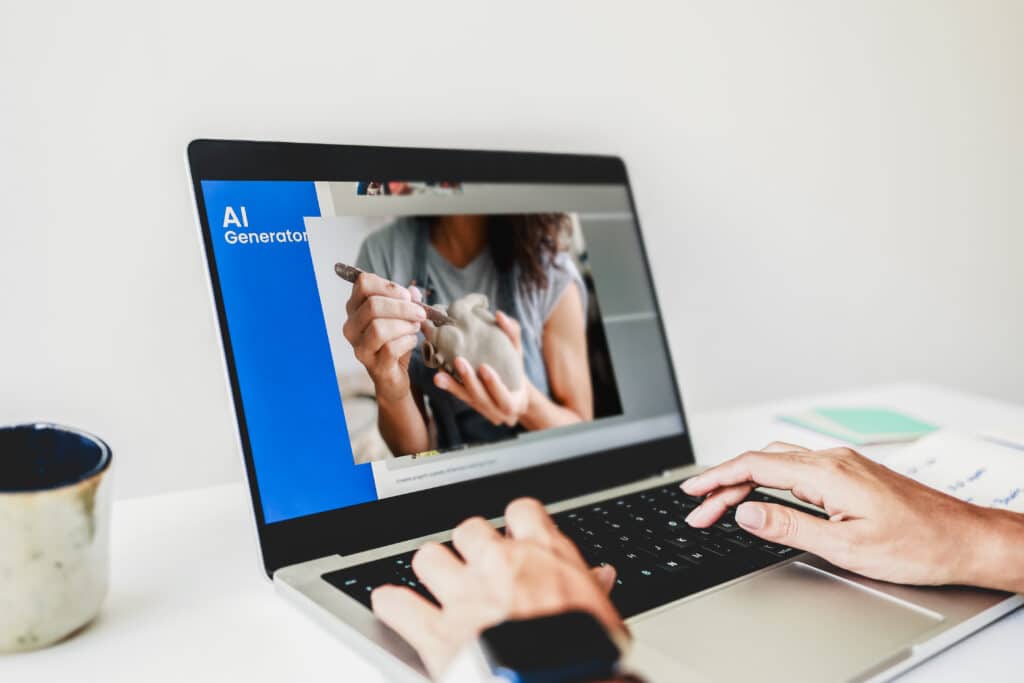
Boosting employee engagement and retention
Employee retention ranks at the top of corporate priorities, especially with today’s tight labor markets. AI provides robust tools that help keep your workforce happy and involved. HR professionals can now tackle engagement challenges directly by analyzing data patterns and automating tailored interactions.
AI-powered sentiment analysis
Annual employee surveys are not just the start of employee engagement. Companies now utilize AI-powered sentiment analysis to track their workforce’s emotional state live. These advanced tools analyze employee feedback through surveys, social media posts, and internal communications to spot patterns in employee emotions and attitudes.
AI sentiment analysis stands out by:
- Spotting early signs of burnout or frustration before employees leave
- Finding specific departments or teams that face engagement challenges
- Giving HR teams useful insights instead of raw data points
Advanced NLP capabilities let these systems grasp human language nuances and determine whether communications show positive, negative, or neutral sentiment. Organizations can address concerns proactively and build more supportive work environments.
AI sentiment tools convert qualitative feedback into measurable metrics. HR teams can track engagement trends and measure how well their interventions work with unprecedented precision.
Personalized nudges and feedback loops
Generic communications don’t work in today’s diverse workplaces. AI enables “smart coaching” that delivers custom nudges based on each employee’s needs and priorities.
These AI systems blend multiple data sources to find specific areas where employees need guidance. They send timely, relevant nudges through the employee’s preferred device. These gentle reminders cover everything from performance optimization to work-life balance.
The results speak for themselves. A utility company that implemented AI coaching saw productivity rise 8-10% while rework rates fell 20-30%. Another organization cut call handling time by 11% in just three weeks.
These systems work well because they learn continuously. The AI builds profiles of preferred learning styles as employees respond to different nudges and adjusts its approach. iTacit’s AI HR Assistant shows this approach in action by delivering custom guidance while respecting individual choices.
Predicting turnover risks
AI’s ability to spot employees likely to leave before they update their resumes proves most valuable. Advanced predictive models use various data points to calculate turnover probability accurately.
These systems watch several key indicators:
- Changes in engagement metrics and survey responses
- Changes in communication patterns or collaboration levels
- Attendance patterns like increased sick leave or late arrivals
HR can implement targeted retention strategies when AI flags at-risk employees. These strategies might include custom incentive packages, development opportunities, or workload adjustments.
AI analyzes exit interview data to prevent future departures. Organizations can fix systemic issues before they affect others by identifying common reasons why people leave.
The business benefits are clear. Companies that use AI for employee engagement see up to a 30% increase in engagement levels and much lower turnover rates. Replacing an employee costs 1.5-2x their annual salary, so these retention improvements bring substantial financial benefits.
AI for performance management and development
AI has changed how we handle performance management in HR. The traditional annual review system is giving way to AI-powered approaches that help employees grow throughout their careers.
Real-time performance tracking
The days of waiting for quarterly reviews are over. AI systems constantly analyze workplace data and provide immediate feedback on employee productivity. These tools can spot performance issues that managers might overlook. Your team can act quickly when notifications are set for specific thresholds. This prevents small issues from becoming major problems.
A utility company’s productivity increased by 8-10% after implementing AI-powered performance tracking. On top of that, these systems look at how resources are used to balance workloads and prevent burnout among team members. This helps avoid the uneven work distribution that often pushes staff to leave.
Identifying skill gaps and training needs
AI is great at finding exactly what training each employee needs. Through “skills inference” processes, AI looks at employee data to calculate skill levels and spots where improvement is needed.
Johnson & Johnson took this approach by:
- Creating a skills taxonomy for future-ready capabilities
- Gathering evidence from multiple HR systems
- Using AI to rate proficiency levels on a 0-5 scale
The results speak for themselves, J&J’s professional development platform saw 20% more usage after they started using AI-driven skills assessments. Companies can now create training programs based on actual needs instead of guesswork.
AI-powered training suggestions help save time with targeted learning. They improve engagement through tailored content and boost skill development with adaptive approaches. Yes, it is true that these systems keep learning about each employee’s progress and adjust their suggestions accordingly.
Continuous feedback and coaching
Traditional feedback methods don’t deal very well with timing, problems often grow worse while managers analyze yearly surveys. AI-powered coaching tools now give objective feedback based on solid data.
These systems look at performance metrics to find individual strengths and improvement areas. They then deliver tailored coaching strategies with clear actions and goals. Companies using this approach report a 30% jump in employee engagement.
iTacit’s AI HR Assistant shows how this works in practice. It increases both the amount and quality of workplace feedback. These tools bring back the value of feedback in building organizational culture by structuring interactions and reminding employees to share their input.
As AI keeps evolving, performance management focuses less on judgment and more on continuous development. This creates workplaces where employees thrive through ongoing growth opportunities.
Challenges and ethical concerns of AI in HR
AI brings remarkable advantages to HR departments, but it also creates challenges that need careful thought. The quick adoption of this technology means we need a balanced approach to maximize benefits and minimize potential risks.
Data privacy and security
AI systems in HR handle so much sensitive employee information that privacy has become a serious concern. A newer study shows 85% of employees worry about their personal data’s security as AI becomes more common in HR. These concerns make sense, AI systems without proper training might mishandle sensitive data or fail to anonymize information properly.
HR teams must be disciplined about the amount of personal data they collect and store. As Chris Stouff notes, “Collect only the necessary data required and, where possible, anonymize data to enhance employee data protection”. Strong encryption, access controls, and regular audits protect against unauthorized access and security breaches effectively.
Keep in mind that organizations can transfer some risk to managed providers, but they stay accountable for data privacy from “cradle to grave”.
Bias and fairness in algorithms
AI systems mirror the human biases found in their training data. University of Washington’s research revealed troubling patterns in how large language models evaluated resumes:
- White-associated names were favored 85% of the time
- Female-associated names were preferred only 11% of the time
- Black male-associated names were never favored over white male-associated names
“In the bentwood of these data sets, none of them is straight,” as Immanuel Kant observes. Limited datasets and algorithm designers’ unconscious biases create this problem.
Things get worse when AI interprets previous discriminatory hiring patterns as valid indicators of candidate quality. Companies like iTacit solve this by training their AI HR Assistant with unbiased datasets and running regular fairness checks.

Maintaining human connection
Human elements remain irreplaceable in HR management. More automation leads to less human interaction in many organizations, yet paradoxically, many companies want employees back in offices specifically to boost human connection.
AI excels at repetitive tasks, but it doesn’t have the emotional intelligence and empathy needed for complex workplace situations. HR exists “in the gray, it never was, and never will be, a black-and-white function”.
HR leaders in 2025 must find the sweet spot between digital efficiency and human connection. Smart organizations let AI handle administrative tasks. This frees HR professionals to focus on what humans do best, managing complex relationships and creating customized, valuable solutions.
How to start using AI in your HR department
Are you ready to employ artificial intelligence in your HR operations? Most companies don’t start from scratch, they add AI capabilities to their existing processes step by step.
Assessing your current HR processes
You should measure where your HR function stands with AI implementation. Take a good look at what works and what doesn’t. Your team might spend too much time on certain tasks. Some processes might create constant problems. Research shows departments that use AI automation save about 7.5 hours each week on administrative tasks.
“Sometimes the best place to start isn’t the most obvious,” says an HR tech specialist. “Look for the pain points first.”
AI can make an immediate difference in these high-value areas:
- Employee-facing chatbots for HR service delivery
- Administrative automation for policies and documents
- Recruitment optimization for job descriptions and skills data
Choosing the right AI tools
AI tools differ in quality and capability. When you assess options, several critical factors need attention:
Data quality plays a crucial role, poor training data leads to poor AI results. You should review the provider’s data sources and practices carefully before making a commitment. The potential tools must integrate well with your existing systems. Even the best AI solution becomes useless if it creates data silos.
The provider should offer excellent onboarding and support. Your team needs solid guidance during implementation as the digital world changes rapidly.
Training your team and setting policies
Your HR staff needs education through workshops and training sessions about AI capabilities. Start with smaller tasks and expand to more complex processes gradually. This approach works effectively.
Set clear AI usage policies that specify who can use AI, whether they need approval, and which tasks are restricted. The policy should include reporting requirements if anyone finds discriminatory content.
Using iTacit’s AI HR Assistant for seamless integration
iTacit’s AI Assistant provides a practical starting point for many organizations. This solution helps employees find company policies and training documents through a secure AI-powered search engine.
The results speak volumes, management teams save 4.5 hours weekly on employee questions. Additionally, 87% of users say the AI assistant helped them find answers more easily than before.
iTacit’s solution stands out because it only delivers information that employees already have access to. This approach maintains security while improving efficiency.
Conclusion
AI has changed how HR departments work in organizations of all sizes. This article shows how artificial intelligence changes everything from recruitment and onboarding to performance management and employee participation. Numbers tell the story, companies save hours each week, cut costs substantially, and boost productivity through smart AI implementation.
Your HR team faces a crucial decision point. The way forward isn’t about completely replacing human judgment or avoiding new technology. The sweet spot exists somewhere in between, AI handles repetitive tasks while your team focuses on what humans do best: building relationships, navigating complex situations, and promoting organizational culture.
These benefits go way beyond efficiency. AI tools give unprecedented insights into your workforce and help predict turnover risks and identify skill gaps before they affect operations. They create tailored experiences that make employees feel valued from day one through their entire career experience.
This powerful technology needs thoughtful implementation. Data privacy stays paramount and requires clear policies and strict security measures. AI can analyze huge amounts of information, but only humans provide the empathy and emotional intelligence needed for truly effective HR management.
Organizations that strike the right balance between technology and human touch will thrive in the future. iTacit’s AI HR Assistant shows this approach perfectly, it handles routine questions and documentation while giving valuable insights about employee needs, which saves management teams 4.5 hours weekly.
The AI revolution in HR continues to gain momentum. Technology becomes more sophisticated and available each day. Your organization’s success depends more on embracing these tools while remembering that human resources will always center on people.
AI won’t replace HR professionals; it will turn them into strategic partners who drive organizational success through informed decisions and stronger human connections. Those who see this potential and take steps to integrate artificial intelligence into their HR functions today will own the future.
